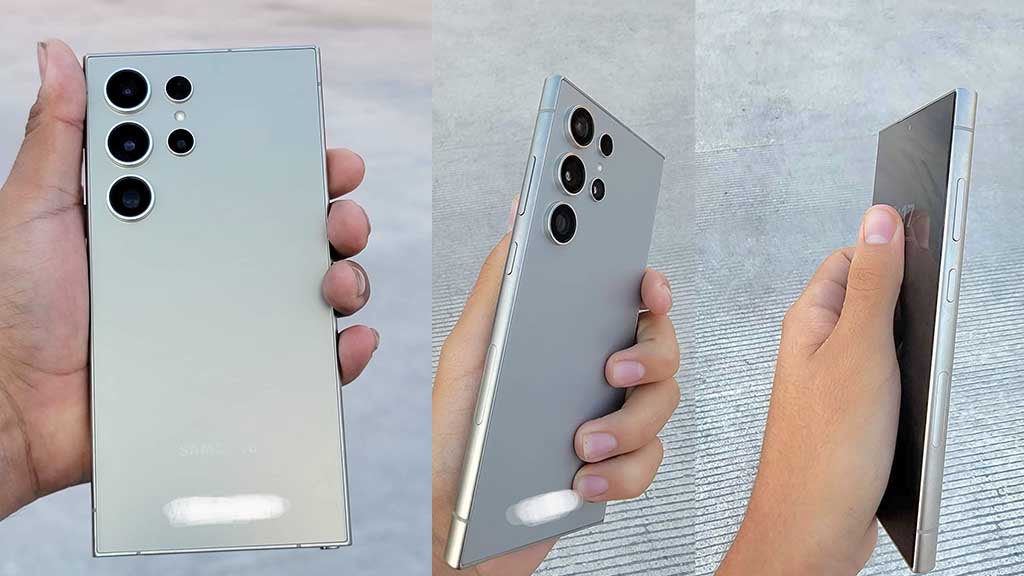News
Galaxy S24 AI Phone: Let Samsung lead the AI era, starting 2024

Samsung’s first Galaxy AI Phone, the Galaxy S24 will be unveiled in San Jose, USA on January 17, 2024. The appearance is not much different from the previous model, but it is attracting attention as an AI phone equipped with a generative AI model.
AI technology has reached an important inflection point that will determine the success or failure of smartphones. Samsung plans to use the Galaxy S24 to open the era of so-called “on-device AI”, which implements AI within the device.
Follow our socials → Google News | Telegram | X/Twitter | Facebook | WhatsApp
Samsung will install its self-developed AI Gauss x Galaxy AI in the Galaxy S24 flagships. The newly introduced Galaxy AI is implemented with on-device AI built into the device.
This is a technology that collects and processes information within the device itself. Because it does not go through an external server, processing speed is fast and security is high.
Galaxy AI is expected to be equipped with not only Samsung Gauss but also the latest AI models from global big tech, such as Open AI’s “GPT-4” and Google’s “Gemini.”
In the case of Google, it maintains a cooperation system with Samsung and Android, and additional AI models can be installed through relatively simple methods such as firmware updates.
The main function of Galaxy equipped with AI is real-time interpretation calls. Even without installing a separate external app, Galaxy AI interprets and delivers information in the other party’s language in real-time.
Device control, sentence summary, and grammar correction are also possible from the terminal itself. Generative AI is also used in major services such as photos, messages, and voice recognition.
The company has set a production plan for the Galaxy S24 series at 35.28 million units. This is an aggressive target that is about 13% higher than the previous work.
This reflects confidence in the first AI phone. The plan is to lead the next-generation smartphone competition by setting the unpack location in Silicon Valley, the US, the courtyard of rival Apple.
Like its predecessor, the Galaxy S24 series will be released in three versions: Standard, Plus, and Ultra, with approximately 15 million units, or 45% of total shipments, are Ultra models.
The change in appearance is that the edge display will disappear for the Ultra model and a titanium frame will be applied. The thickness is reduced by 0.3 mm and the weight becomes lighter.
There is no significant difference in appearance between the basic and Plus models from the previous model. In the Ultra model, one of the rear telephoto cameras is changed to 50MP, which is 5x of its predecessor.
Thanks to this, a 5x optical zoom function is possible. The remaining front and rear camera performances are the same. The basic and plus model cameras are the same as the previous model.
The Galaxy S24 Ultra could solely use the Snapdragon 8 Gen 3 for Galaxy chip, and the basic and Plus models are expected to be equipped with the Exynos 2400 chip and Snapdragon depending on the market.
News
Samsung brings huge energy-saving opportunity to New York

New York became the first US state to bring retail consumer rebates for appliances under the Inflation Reduction Act. Applauding the move, Samsung launched a huge energy-saving opportunity for the residents of New York.
Samsung started offering up-front discounts to consumers statewide through New York’s IRA HEAR program. Consumers can now access IRA’s Home Electrification and Appliance Rebate (HEAR) program.
IRA HEAR rebate program advantages
- Save up to $840 on Samsung’s innovative ENERGY STAR products, including laundry appliances like heat pump dryers and all-in-one combo washers + heat pump dryers.
Visit Samsung’s home appliance page to learn more about the options available.

Samsung said this is just the beginning of its rebates journey in New York. The company looks forward to working with partners to expand these retail rebates to more products and in more states across the United States.
Pay attention, the IRA provides rebates and tax credits to households across America. New York is leading the way in providing direct retail point-of-sale appliance rebates, supporting an affordable clean energy transition.
Inflation Reduction Act
Signed in August 2022, the Inflation Reduction Act is the single largest investment in climate and energy in American history.
It provides home appliance rebates for discounts on electric energy-efficient appliances like Induction cooktops, ranges, and heat pump laundry appliances.
News
Watch: Samsung Galaxy Watch Ultra conquers grueling military training

Samsung Galaxy Watch Ultra has undergone one of the most extreme military tests. The company has recently published a Watch Ultra test video, featuring Phillip Chu Joy.
Phillip participated in the Peruvian Navy’s Special Operations Course to showcase the watch’s capabilities. It is renowned as one of the world’s most challenging military training programs.
“The Galaxy Watch Ultra pushes technology to its limits, handling extreme conditions with ease,” Chu Joy remarked. “It’s undoubtedly designed for those seeking exceptional performance.”
The Samsung Galaxy Watch Ultra proves its durability and functionality in water, mud, and sand — excelling even under the grueling conditions of Peru’s most extreme military training.
Galaxy Watch Ultra
The Watch Ultra boasts a Grade 4 titanium frame. It also features a shockproof cushioned design that meets MIL-STD-810H2 military standards and water resistance of up to 10ATM.

The product is capable of operating within a broad temperature range of -20°C to 55°C4 and performing at altitudes of up to 9,000 meters above sea level.
These capabilities make it ideal for tracking advanced physical activities like ocean swimming and cycling in extreme conditions; take the Perivian military training as a recent proven example.
Samsung’s Watch Ultra is the ultimate companion for sports enthusiasts and extreme adventurers. It’s crafted to endure the toughest conditions with its pro-grade features and premium materials.
Samsung’s Mauricio Revollar stated:
“We wanted the public to experience the Galaxy Watch Ultra like never before in the Peruvian market by creating the most extreme product review ever undertaken here.”
“This was made possible thanks to the collaboration of the Peruvian Navy, which allowed us to highlight and celebrate the commitment of the students in one of the world’s most demanding military training programs.”
Watch the video below:
News
OpenAI eyes AI integration on Samsung phones like Apple Intelligence

Apple collaborated with OpenAI to power Apple Intelligence features. The ChatGPT maker continues to create obstacles for Google. In a recent move, OpenAI discussed a potential AI partnership with Samsung.
TheInformation (via Reuters) reported that OpenAI has recently discussed powering AI features on Samsung-made devices. It seems the ChatGPT-maker wishes an AI partnership with Samsung to expand its reach in multiple folds.
The company is considering developing a web browser to rival Google’s Chrome. OpenAI recently introduced its search engine called SearchGPT. It is available to limited users alongside internal testers and strategic partners.
Samsung x OpenAI
Samsung and Google’s close partnership doesn’t need any elaboration. The friendship isn’t limited to services, as both firms work across an ecosystem. However, it doesn’t stop Samsung from partnering with OpenAI in favor of better service.
As the AI phone market is growing rapidly, OpenAI may innovate further. Google doesn’t lag, but there’s still room for a potential alliance. Apple Intelligence-like features might be deployed on Galaxy phones after Samsung’s partnership.
OpenAI knows Samsung holds the command of the worldwide smartphone market. Expansion of its services will be quite broader than Apple if its partnership with Samsung pens down. For now, take this information as a grain of salt!

Apple x OpenAI
Apple leads the worldwide premium smartphone market. Google and Samsung introduced their AI phones in October 2023 and January 2024, respectively. It forced Apple to immediately enter the segment to normalize the innovation gap.
Google’s availing Gemini Nano AI model, but Apple joined hands with OpenAI. To create a difference, OpenAI powering some of the coolest AI features on recent iPhones. The move is to attract other vendors to adopt source AI from OpenAI.
Well, Apple still reportedly considering bringing Gemini AI on iPhones. The company believes that iPhone users should have different AI providers available. Hence, a multi-collaborative approach is also in the pipeline, at least from Apple’s end.












